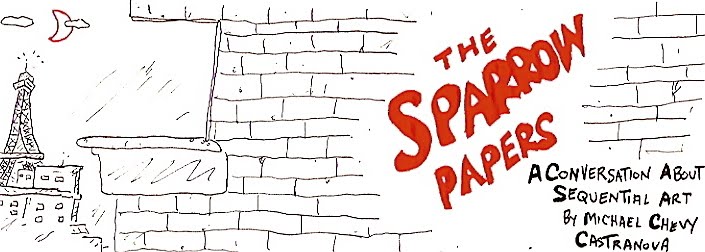 When Hugo Pratt set about to design the logo for his mythic adventure hero Corto Maltese, he consciously imitated Milton Caniff’s famous Terry and the Pirates lettering — dynamic and fun, bold and spunky.
When Hugo Pratt set about to design the logo for his mythic adventure hero Corto Maltese, he consciously imitated Milton Caniff’s famous Terry and the Pirates lettering — dynamic and fun, bold and spunky.Except that Caniff didn’t draw that famous logo. It was created by his longtime friend, drinking buddy and fellow cartoonist, Noel Sickles. If you want to really know about sequential art, you need to look at Sickles.
As pointed out in Scorchy Smith and the Art of Noel Sickles, when Sickles inherited the adventure strip of airplane ace Scorchy in 1933, he tried to copy the dodgy art work of his predecessor. But, it seems, he just couldn’t do it for long. Sickles was too good. The transformation was like Dorothy opening that door after her house crash-landed in Oz.
This is a giant book, which is good as it contains every Scorchy Smith strip Sickles wrote and drew, three years worth, plus a few before he took it over and a few after he left to pursue magazine illustration (and there are plenty of samples of that, too, along with his biography). Sickles’s comic strip illustrations are, in a word, splendid. His colorful heroes bristle and his femme fatales slink as well as anyone’s — including his pal Caniff’s.
Even better, the detail Sickles managed to squeeze into those tiny daily panels — of air battles and of trains run amok, of cowboy ranches and jungle villages, sun-baked seaports and snow-covered hideouts, of open fields and the coming dusk — are enough to cause any cartoonist tears of envy. As Sickles himself boasted, he could draw anything.
And, by golly, he really could.
(You can read more about the work of Sickles and Caniff, together and separately, in Ron Goulart’s 1975 book, The Adventurous Decade: Comic Strips in the Thirties. I hope to devote a post to that book soon.)

No comments:
Post a Comment